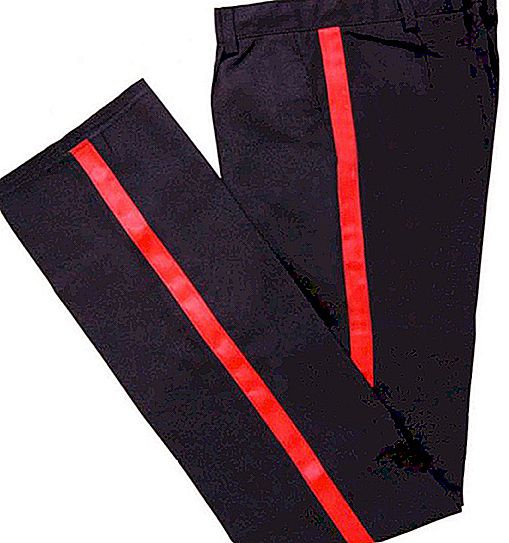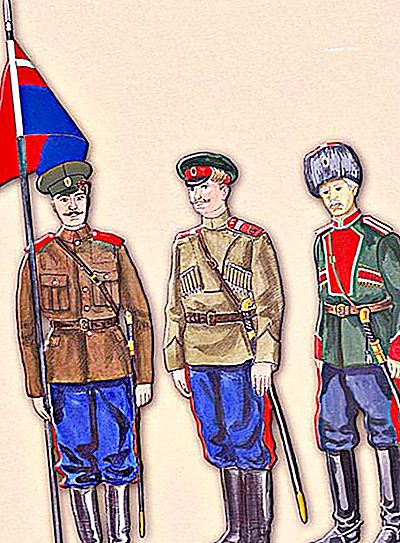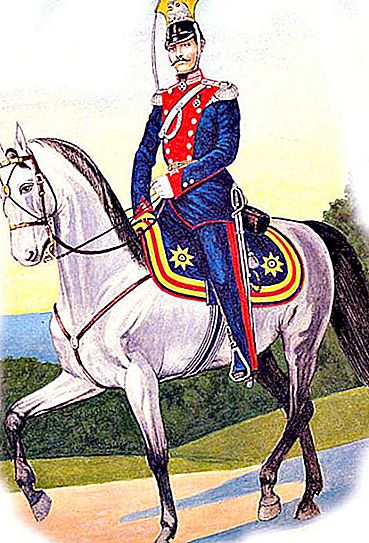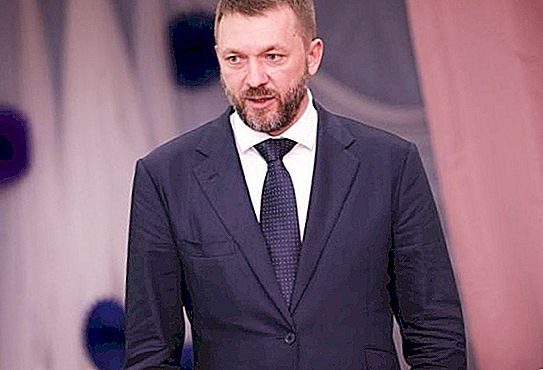Lampas are inserts from strips of fabric on the side seams of uniforms of officers, generals and marshals, as well as representatives of the Cossack army, and differ in color from the main tone.

First stripes
The history of the appearance of stripes dates back to ancient times (VIII century BC). It is believed that then the Scythian wars began to use leather ribbons covering the side seams on their pants as a distinctive sign.
The Scythian society had a clear division according to the type of life: from cattle breeders and artisans to swordfish warriors and “royal” Scythians. The latter wore leather stripes, often trimmed with gold ornament, on their trousers. It was a sign of belonging to the high estate.
Lamps at the Cossacks
According to one of the historical versions, the tradition of the Scythians to wear stripes was adopted by the Cossacks. But in Cossack circles there is another version, a legend on this score, according to which the stripes on the pants of the Cossacks appeared as follows:
Once the Cossack envoys, returning from Moscow after negotiations, brought the emperor’s salary paid to them by money, bread and cloth, with special instructions on the fabric, ordering the best atamans to issue a scarlet karmazin, and all the rest - a blue kindyak. However, the Cossacks refused to comply with such an order, believing that among them there are no better or worse - they are all equal. Therefore, it was decided to divide all the tissue equally. There was more blue fabric, so each Cossack was cut off in a large piece, which was enough for a checkman and pants, and scarlet was scarce, but it was still divided into equal parts. Each got a narrow strip, which was found on the side seams of his pants.

Pants with stripes among the Cossacks became not only a distinguishing feature, talking about belonging to the Cossacks, but also a kind of symbol of national identity, independence and liberty. Moreover, by the color of the stripes it was possible to approximately determine which army the Cossack belongs to.
Amur, Astrakhan, Transbaikal and Ussuri Cossacks wore pants with yellow stripes. The Don and Yenisei Cossacks had red stripes. Kuban and Ural have raspberry. Cossacks of the Orenburg region wore light blue stripes. Siberian Cossacks flaunted in pants with scarlet stripes. In Terek Cossacks, stripes were replaced by a light blue edging.
A more accurate membership of a particular army was determined by the color of the uniform, epaulets and the color of the cap of the cap.
The appearance of stripes in the Russian army
For the first time, stripes adorned the uniforms of the Russian army in 1783 during a reform carried out by Field Marshal G.A. Potemkin, who determined that stripes were an additional attribute for uniforms that made it possible to establish the military status of a command post in peacetime. During the war, the stripes were abolished, as they unmasked the commander on the battlefield.

However, Paul I, who occupied the tsar’s throne in 1796, decided to again carry out reforms in the Russian army, and first of all they affected the command staff. The prevailing image of officer life, which was quite voluminous during the reign of Catherine II (officers spent most of their service attending social events), changed dramatically under Paul I. The new Military Regulations adopted by him compelled officers to take up their direct duties. Changes affected and uniforms. In particular, the emperor decided that stripes were “not modern”, like the whole form adopted after the Potemkin reforms, while dressing the entire Russian army in outfits similar to the army of Frederick the Great, King of Prussia, forcing officers to wear powdered wigs.
In 1803, Alexander I, who took his place on the throne instead of Paul I killed during the palace coup, returned the stripes to the army. At first, the changes affected the uniform of Lancer, and later the rest of the troops.




